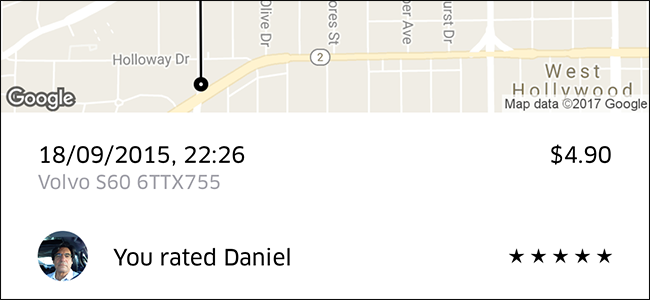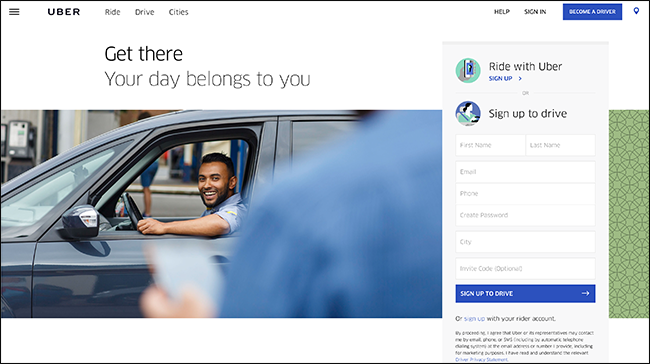Quick Links
The gig economy looks like it’s here to stay. Although Uber still has the occasional battle with regulators, for the most part smartphone app-driven gig companies are popping up for every service imaginable.
Want someone to pick up takeout from a nice restaurant that doesn’t normally deliver? What about run to the shop and grab a few batteries for your TV remote? Favor can do it. What about someone to come in and clean your place while you’re out? Look no further than Handy. Odds are, if you can think of a small job that someone could do for you, there’s an app that will help you find someone. It’s really convenient.
The gig economy, though, does have a few quirks, so let’s dig a little deeper into how it works.
How the Gig Economy Works
Almost all gig economy companies work in roughly the same way, so let’s just use Uber as an example.
An Uber driver (well, at least an UberX driver) is a regular person who is using their own car; pretty much anyone who meets the basic criteria can sign up. They’ve got a smartphone app provided by Uber that they use to find gigs.
Uber’s customers also use an app. When you want a ride, you open the app, enter your location and a ping is sent out to nearby drivers.
The Uber driver who’s sitting just down the road, gets the notification and wants the job. They tap Accept, drive over, pick you up, take you to your destination and drop you off. Your credit card is charged and you go on with your day. Both you and the driver are able to rate each other.
The Uber driver gets paid by Uber (less their cut for providing the platform).
And that’s kind of it. Whatever the actual thing the person is doing for you, it all works broadly the same. There’s just one small niggle in it: the ratings.
Ratings and the Gig Economy
Ratings are a big part of most gig economy jobs. They’re how the company decides which contractors are doing great and which are potentially embarrassing the platform (and also which customers are a nightmare). They don’t want any headlines about dodgy people using their apps. Reviews are a sensible way to do this.
The problem is that the implementation of this system leaves a lot to be desired. Although Uber is moving to a Like/Dislike system, most other gig companies still use a five star rating. One would think that a five star rating’s for an awesome driver, a four star rating is for a driver that gets you there and is pretty good all around, a three is if they’re merely adequate and maybe drive a messy car, and a two or one is only really fair if they’re awful. That would make sense, right?
Well that’s not how it works. The contractors working for gig economy companies are required to maintain a minimum star rating. It’s different across the platforms, but all the examples I could find required contractors to keep their average rating at four-point-something. Lyft, for example, tells drivers that an average rating below 4.8 is a cause for concern and Handy requires an average of 4.2 or contractors will get cut off.
The math is pretty simple. If a contractor is required to keep their average rating above 4.5 stars, any rating lower than a perfect 5 drags them down. A 4 isn’t “good”, it’s “I think this person should be kicked off the platform”. That’s kind of nuts, and totally at odds with how most people think about star ratings.
What Rating Should You Give Your Driver?
It all boils down to this: if you’re using someone working for a gig economy company and they do the job they’re meant to do without any major issues, you should probably give them a 5 star rating. Anything less could drag down their average and put their job in danger.
If there’s a small problem with the job they’ve done—maybe they take a weird route or their car isn’t perfectly clean—you should tell them there and then. Giving them a 2 star review might feel satisfying, but it won’t help them improve. Most gig economy companies are really bad at passing feedback along to their contractors. After you tell the person your issues, it’s up to you what you do review wise. If you’re feeling kind, you can give them a 5 star review anyway or just not bother to leave them a review.
Finally, if there’s a major problem, like your Lyft driver shows up drunk or your Favor Runner tries to sell you drugs, the review system isn’t the one to use. Lodge a formal complaint with the service and let them take it from there.
The gig economy isn’t going anywhere, but it’s still finding its feet. Things like ratings that are really important aren’t universally understood by everyone. It’s a bit ridiculous that 4 stars is considered a bad review but, when it comes to the gig economy, apparently it is.


